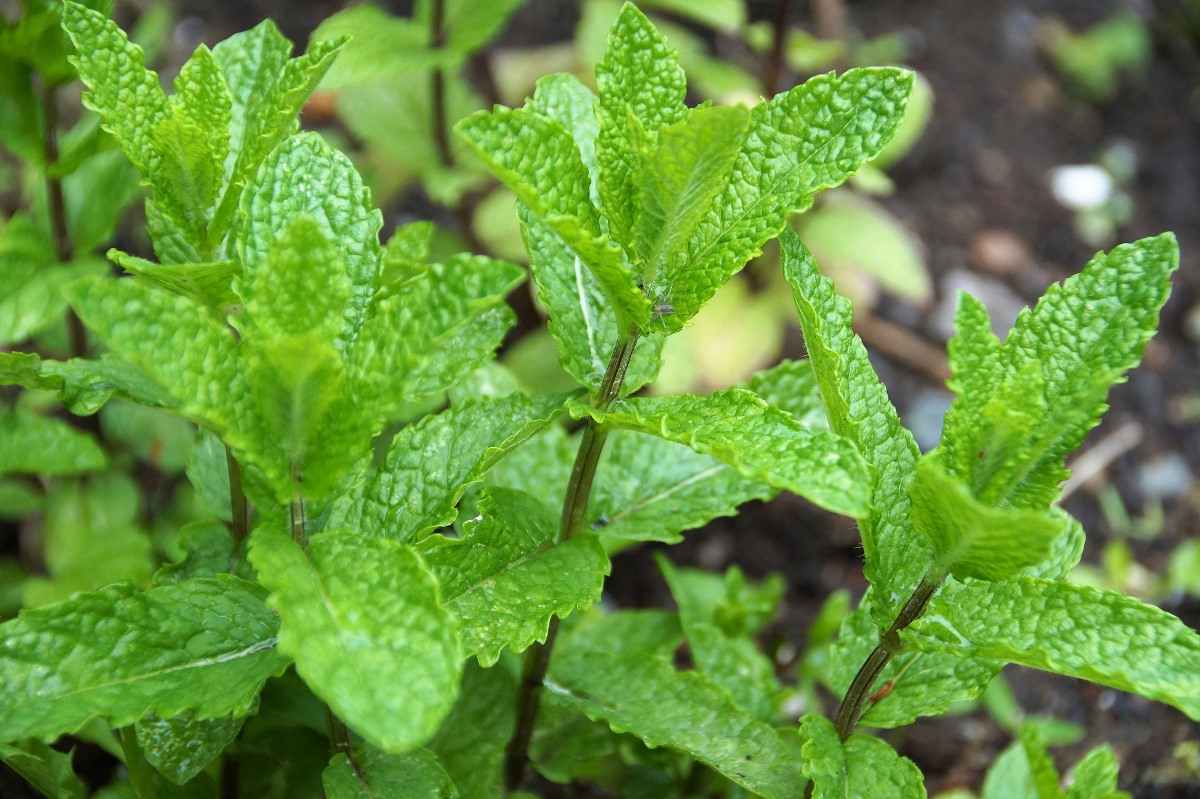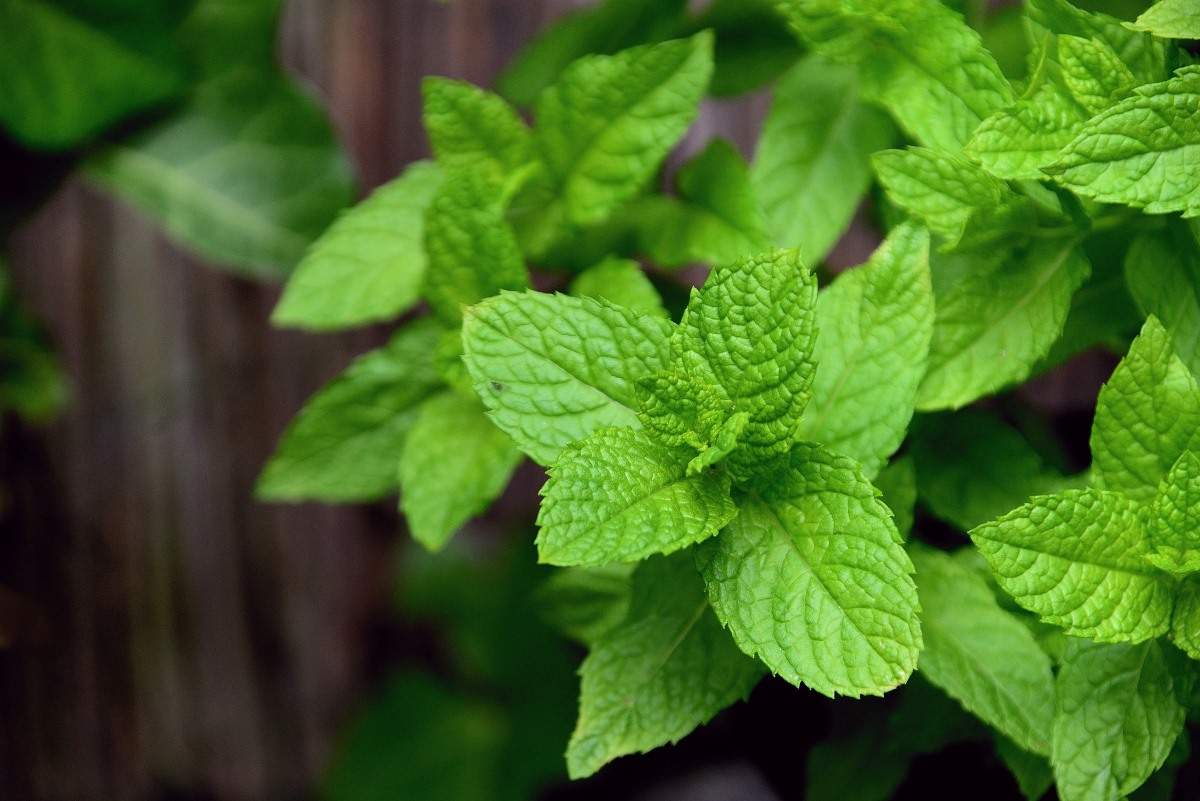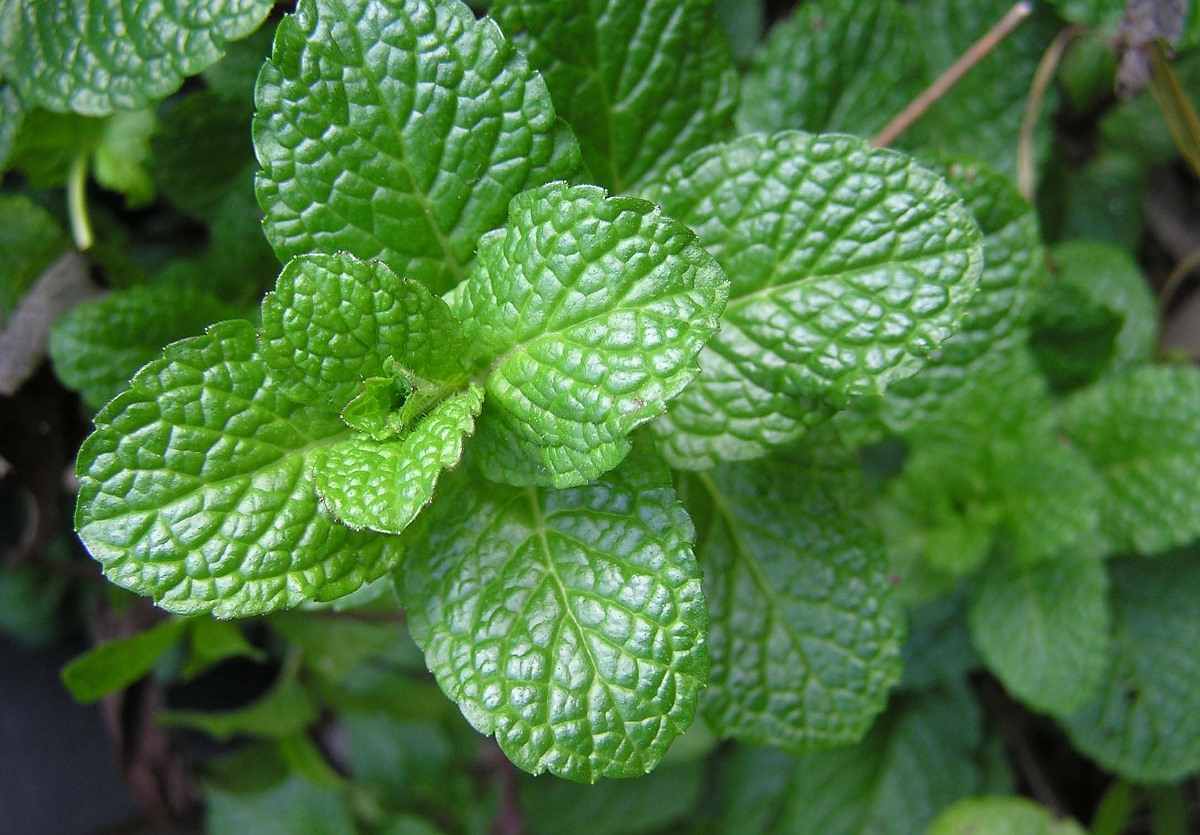Growing Mint Indoors/How to Grow Mint Indoors
Hello gardeners, we are here back with a new and indoor topic. The topic is all about growing mint indoors. Do you want to grow mint indoors? Well and then you need to follow this complete article to know about how to grow mint indoors. In this indoor article, we also discuss all the requirements for growing mint indoors.
Introduction to Growing Mint Indoors
Mint is a genus of plants in the family of Lamiaceae that is mint family. It is a perennial herb with very fragrant and toothed leaves and it even has very tiny purple, pink, or even white flowers. It has a fruity and aromatic taste. There are many different varieties of mint plants to grow they are all fragrant, whether shiny or fuzzy, smooth or even crinkled, bright green or variegated. However, you can even always tell a member of the mint family by its square stem just by rolling it between your fingers; you can notice a pungent scent and then think of candy, sweet teas, or even mint juleps.
It is a kitchen companion, as well as mint leaves, are even used as garden accents, used in ground covers, used as air fresheners, and even as herbal medicines. They are as beautiful as they are very functional, and even they are foolproof to grow well, surviving in sun and shade all over North America. Mint can be also a vigorous spreader, so be you need to be careful where you plant it.
A Step-By-Step Planting Guide for Growing Mint Indoors (Pudina)

Mint is a very lovely and low-maintenance plant with a wide variety of applications in food, drinks, and even household products. Mint grows good and best as a potted plant so that it is a lovely plant to grow indoors. If you would enjoy growing mint in your home, all you need to do is to get a mint seedling, re-pot it, and then perform some routine care. Then you can harvest your mint as needed to make mojitos or even a mint tea.
The Overview Table of a Mint Plant is Given Below
| Botanical Name | Mentha spp. |
| Common Name | Mint, peppermint, and spearmint |
| Plant Type | Perennial herb |
| Mature Size | 12–18 inches tall and even 18–24 inches wide |
| Sun Exposure | Full sun to part shade |
| Soil Type | Rich and even moist |
| Soil pH | 6.5–7.0 that is slightly acidic to neutral |
Varieties of Mint
If you are ready and excited to grow mint, then try these varieties listed below:
- Mentha piperita that is peppermint: This is good and best for mint flavouring
- Mentha spicata that is spearmint: This is very excellent for flavouring teas and even salads, and is one of the good types of mints to use as a landscape ground cover
- Mentha piperita citrata that is orange mint: This is one of the super tangiest of the fruit-flavoured mints.
- Mentha suaveoloens that is apple mint: It combines the flavours of apple and even mint
- Mentha suaveolens Variegata that is pineapple mint: This is a variegated offshoot of apple and mint
How to Acquire a Mint Seedling for Growing Indoors?
- By purchasing a mint seedling
Mint plants are notoriously very difficult to start from seed. Instead, you can visit your local nursery or even sometimes your local grocery store and then purchase a mint seedling. Look for a seeding that is already at least 3 to 4 inches or 7.6 to 10.2 cm tall.
Some varieties of mint such as sweet mint, chocolate mint, spearmint, lemon mint, apple mint, and even peppermint can be used.
Spearmint and even peppermint are the most common type. Spearmint is often used in baking and even in cooking. Peppermint is commonly used more often for drinks, like mojitos and even in hot chocolate.
- By propagating a new mint plant from a cutting
You need to trim a 4 in or 10 cm sprig from an existing mint plant that is nearly about 0.5 inches or 1.3 cm above a junction. Then place the trimming in a glass of water, and wait nearly about 1 week. Very small white roots should begin appearing underwater. Then wait another 2-7 days to allow the roots to develop slightly. You can even add water to the glass as necessary and change the water every 4-5 days to keep your trimming very healthy.
- Or use a “runner” from an existing outdoor mint plant
If you have any friends with an existing outdoor mint plant, you can be able to use one of their runners. “Runners” means that they are long stems that usually grow away from a mint plant. Runners usually set their roots in the ground, which means they can be very carefully removed and then transplanted into a new pot. Look for a runner, and then use a trowel to gently remove it from the underground.
Suitable Container for Growing Mint Indoors
You need to find a container with a wide surface. Mint plants usually need a lot of widths to grow very effectively, but they do not need a great deal of depth. For each mint plant, better look for a container at least 8 to 12 inches or 20 to 30 cm wide container.
Ceramic planters are very porous and they even lose moisture very easily. Your mint will be happy in a plastic container.
You can even repurpose a plastic container by drilling a hole in the bottom for good drainage.
Suitable Soil for Growing Mint Indoors
Mint plant usually prefers to grow in rich soil with a slightly acidic pH range between 6.5 and 7.0. If the soil you choose is somewhat poor, then you need to top-dress yearly with high organic matter and then apply an organic fertilizer mid-season after shearing.
Best Indoor Growing Conditions for Mint
The environmental conditions that mean temperature, lighting and even humidity found within most homes are well suited for growing houseplants and even herbs alike. Most of the indoor plants usually prefer warm, sunny locations and survive well when given optimum conditions. The right sunlight exposure, ambient temperature, and even relative humidity encourage vigorous plant growth and the best tasting foliage.
Suitable Plant for Growing Mint Indoors
You need to place your mint plant so it receives indirect sunlight. Better choose an area that receives morning sun and even partial afternoon shade. You want the plant to get some amount of light without drying it out completely. So, better rotate your plant every 3-4 days. Mint plants will grow very well in the direction of sunlight, and rotating the plant helps to keep it from growing unevenly.
Some good options are listed below:
- A windowsill that needs to face north
- A shelf across the room needs from a south-facing window
Planting Procedure of Mint Plant

Fill your selected container with potting soil. You can even pick up some potting soil from a local nursery, home improvement store, or even a big box store. Mint plants will enjoy soil that drains well, so you should not pack the soil too tight.
Better test your soil for a pH of 6 to 7.5. Mint plants are not so super finicky, so they will accept a relatively good wide pH range. You can use a test kit to make sure your soil falls within this optimal or ideal range.
To lower the pH level of your soil, better add some compost, composted manure, or even acidic mulch.
To raise the pH level of your soil, you need to add pelletized lime or even wood ash.
You need to place your mint seedling in the container. By using a small trowel or your fingers, better make a very small opening in the soil. You need to very carefully place your mint seedling into this opening. Then move the soil around your seedling so that the roots are no longer exposed, and even your seedling can stand up.
Indoor mint plants do not require any fertilizer or even mulch.
Better water your seedling immediately after planting. Once you have gotten your mint plant in the soil, you need to give your seedling a generous watering. For one mint plant, better offer around 6 to 8 fluid ounces or 180–240 ml of water.
Three Ways to Grow Mint Indoors
There are three primary ways to grow mint as an indoor plant. Now, let us discuss each option in turn.
1. How to grow the mint plant indoors in soil
This is the most familiar way to grow mint indoors. Better choose a pot that is at least 8 inches in diameter and has a very good drainage hole in the bottom. If you like decorative ceramic pots you can use them, but plastic works too. You need to avoid using clay pots because they dry out very quickly. You can use high-quality soil, general potting soil to put your mint plant, by making sure to leave about a half-inch of headspace between the top of the soil and then the rim of the pot. This will act as a reservoir and hen keeps irrigation water from running off very quickly. Potted mint plants can easily live for years as indoor mint plants.
2. How to grow the mint plant indoors in water
Mint can also be easily grown indoors in water. The main and important benefit of this method is the lack of soil. No mess, no watering, and even never any fungus gnats. However, mint doesn’t live forever in water. Eventually, the leaves will yellow and therefore the plant will stop growing. However, keeping a couple of water-rooted stems during a jar above the sink means you’ll be ready to make the occasional harvest. To start out growing mint indoors in water, simply take some stem cuttings from a mother plant, remove all the lower leaves, and prop the stems during a glass of water. Change the water and then wash the glass every five to seven days. They going to quickly develop roots and may be grown within the water-filled jar for a couple of weeks or months, counting on the growing conditions.
3. How to grow the mint plant indoors hydroponically
It’s also possible to find out the way to grow your mind indoors by using hydroponics. Mint may be a great crop to grow to employ a commercially made or a DIY hydroponic system. The shortage of soil translates to less mess, but hydroponic systems are costlier than soil-based growing. The nutrient solutions are much costlier than traditional fertilizers. However, if you propose to grow tons of mints, hydroponics is worth researching.
Water Requirement for Growing Mint Indoors
Water your mint very frequently. You need to water your mint at least every 2-3 days, or more if you live in a very dry climate or when your mint is getting a lot of direct sunlight. Better check the soil with a finger each day to ensure that the soil is still moist.
You need to add around 1 to 2 cups or 240 to 470 ml to your mint plant at each watering.
Humidity can be more important to the growing process, so better consider misting your plant with water in between watering.
How to Prune Indoor Mint Plants?
A regular haircut is very good and necessary to keep your mint plant very bushy and to encourage new growth. You need to use a pair of herb scissors or even needle-nose pruners to trim the stems back regularly, ideally once every few weeks. Better cut just above a set of leaves and even two new stems will develop from the leaf nodes, causing each stem to branch in two. You can use the trimmings in the kitchen.
Suitable Fertilizers for Growing Mint Indoors
Use water-soluble fertilizer if it is required. Mint plants do not often require any sort of fertilizer, but they will help improve your plant’s growth if used occasionally. The best time to use fertilizer is in the spring season when the plants first start the new growing or starting season.
Better to choose a water-soluble or time-release fertilizer.
Too much fertilizer will also alter the taste of your mint.
Caring Tips for Growing Mint Indoors
You need to remove any flower buds before they open. Although the flowers that appear at the top of your mint plant are too pretty, you will need to trim them off as soon as they appear. You can use a pair of sharp scissors to clip the flowers off at the stem to prevent fewer and blander mint leaves.
This will prevent the plant from “going to seed.” When a mint plant starts producing seeds, it will put less energy into leaf production.
Common Pests and Diseases of Mint
Mint plant can sometimes get rust on it, which appears as very small orange spots on the undersides of leaves. You can use an organic fungicide and even try to allow plants to dry between watering.
Stressed type mint plants may also be bothered by whitefly, spider mites, aphids, and even mealy bugs.
Harvesting Mint Leaves
You can start harvesting mint leaves once the plants have multiple stems that are about 6 to eight inches long. This could take about two months if you’re growing plants from seed or less time if you’re buying nursery plants. Don’t harvest quite one-third of the plant at any time, to stop weakening the plants and sending them into decline.
Snip sprigs and leaves as required. If you are doing not harvest your mint regularly, it’ll benefit greatly from a shearing mid-season. At some point, you’ll probably notice the stems getting longer and therefore the leaves getting shorter. That’s the time to chop the plants back by one-third to one-half. This may encourage them to send fresh new foliage again, with good-sized leaves.
Commonly Asked Questions about Growing Mint Indoors
In case if you miss this: Backyard Hydroponic Gardening.

Can I grow the mint plant indoors all year?
Mint plants are very easy to grow indoors, year-round. One of the most important details is to select a perfect container with a wide surface, rather than a deep one, and to keep the mint roots from encircling themselves and even choking a plant.
How do I keep mint alive indoors?
These plants usually prefer to be kept moist but not overly wet. If the upper part of soil becomes dry to the touch, then watering is needed for the plant. Otherwise, better try to keep it evenly moist. Humidity is another most important factor, so mist the plant between watering or even set the container on a water-filled tray of pebbles.
How do I grow mint in water at home?
You need to cut a stem of mint around 15 cm in length. Then choose a thick, very healthy stem and then cut just below a node that means the bump in the stem you will see the leaves shoot from. Then gently pull off about one-third to half of the leaves. Again place the stem of the mint in a clean glass of water out of direct sunlight.
Why my potted mint plant is dying?
The most common and important reasons for mint dying are usually because of: Under watering, which means mint requires consistently moist soil. Root rot which means soggy soil or even pots without drainage can even cause mint to turn yellow and droop.
How can I make my mint plant very bushy?
You need to sprinkle the soil with a little time-release fertilizer if you wish. Water the mint plants well. Finally, by positioning your fingers like mine in the photo at left, you need to pinch off the top two to four leaves on each plant. This will make the mint branch out and then it will become bushy.
Why my mint leaves are very small?
Your mint plant’s leaves are very small because of their roots. Some people will say that you will need to use fertilizer; some will tell you that you need to give it more water, and again some will say it needs more sun. The mint’s roots will simply take over all the space and then won’t let the other plant grow well.
That’s all folks about growing mint indoors, hope this information will help you to this wonderful culnery herb.
- How to Grow Hibiscus from Flower
- Plantation Ideas for Home Decoration: A Beginners Guide
- Flower Garden Designs and Layouts for Beginners
- Planting and Spacing Techniques in Papaya: A Beginner’s Guide
- Growing Gold: Essential Techniques for Planting Pineapples
- How to Make Kalanchoe Plant Bushy: Home Remedies and Solutions
- 11 Reasons Why Your Gardenia is Not Blooming: Home Remedies and Solutions
- Eco Elegance: The Guide to Designing a Drought-Tolerant Landscape
- Gardening on a Slope: Strategies for Hillside Landscaping
- Nourish and Flourish: Top Organic Mulches for Thriving House Plants
- Everything You Want to Know about Indian Mogra Flower: Discover Uses and Growing
- Green Thumb Success: Expert Tips for Cultivating Greenhouse Pumpkins All Year Round
- Maximize Growth & Flavor: The Ultimate Guide to Companion Planting in Herb Gardens
- How to Control Rhododendron Problems Naturally: Home Remedies and Organic Ways to Fix Them
- Natural Magic: The Remarkable Benefits of Cinnamon for Plants
- Best Steps to Revive Dying Tulip with Natural and Organic Treatment
- 10 Reasons Why Your Angel Trumpet is Not Blooming: Remedies and Treatment
- How to Fix Periwinkle Leaf and Flower-Related Problems: Natural Remedies and Solutions
- How to Fix Zinnias Leaf and Flower Problems: Discover Natural and Home Remedies
- Organic Steps to Induce Lemon Tree Flowers: A Comprehensive Guide
- Bloom Booster: Crafting the Perfect Homemade Bougainvillea Fertilizer